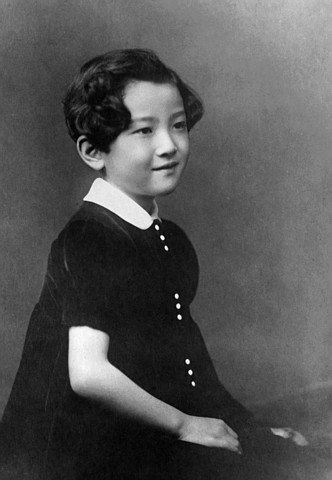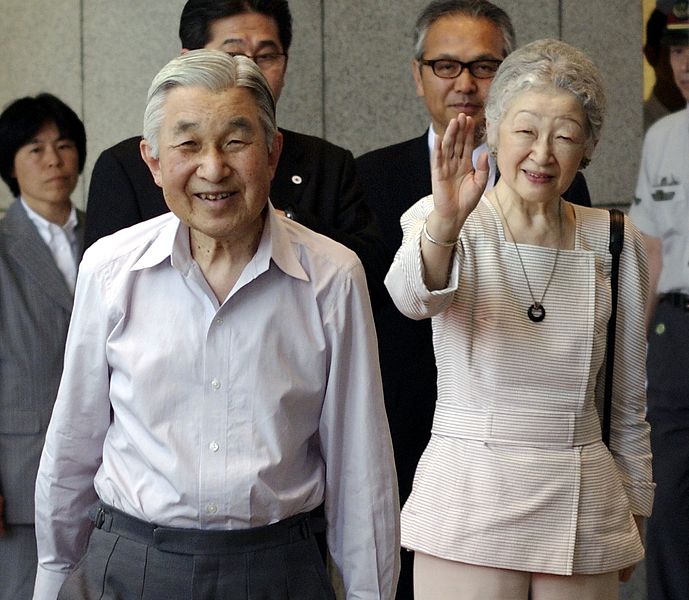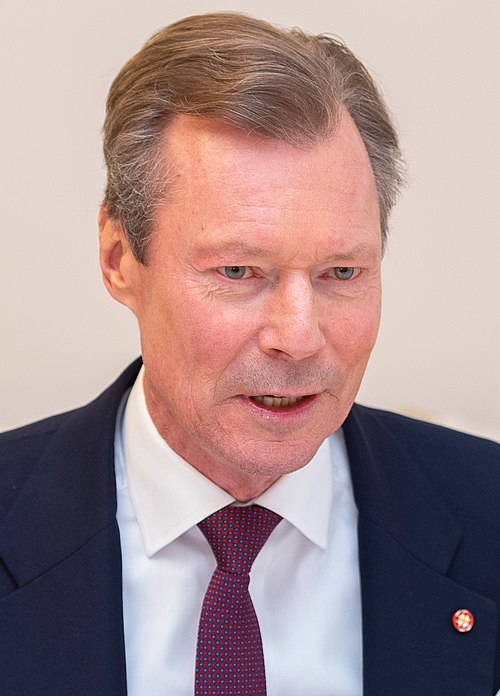by Scott Mehl © Unofficial Royalty 2014
Michiko Shōda was born on October 30, 1934, in Tokyo. She is the eldest daughter of Hidesaburō Shōda, president and later honorary chairman of Nisshin Flour Milling Company, and Fumiko Soejima. She had two brothers Iwao and Usamu, and a younger sister Emiko. Michiko was raised in Tokyo where she began her education, studying both a traditional and Western curriculum, learning to speak English and play the piano. During World War II, Michiko’s family left Tokyo because of the American bombings. The family returned in 1946 and Michiko completed her primary and secondary education. She graduated from high school in 1953. She then attended the University of the Sacred Heart in Tokyo, earning a Bachelor’s Degree in English Literature. She also attended Harvard University in the United States and Oxford University in England.

Michiko in 1940; Photo Credit – Wikipedia
Michiko first met her future husband, then Crown Prince Akihito, son of Emperor Hirohito and Princess Nagako of Kuni, on a tennis court in August 1957. The Imperial Household Council formally approved the engagement of Crown Prince Akihito to Michiko Shōda on November 27, 1958, and the engagement ceremony took place on January 14, 1959. It would be the first time a commoner married into the Imperial Family. The engagement announcement drew criticism from traditionalist groups because Michiko came from a Roman Catholic family. She was never baptized but had been educated in Catholic schools and seemed to share the faith of her parents. Akihito and Michiko were married in a traditional Shinto ceremony on April 10, 1959.
There was much speculation that Akihito’s mother strongly opposed the marriage and that after she treated her commoner daughter-in-law harshly. Michiko suffered from several nervous breakdowns because of the pressure of the media and the attitude of her mother-in-law, which resulted in making her lose her voice for seven months in the 1960s and again in the fall of 1993.

Akihito and Michiko on their wedding day with Emperor Shōwa and Empress Kōjun; Credit – Wikipedia
Akihito and Michiko had two sons and one daughter:
- Emperor Naruhito of Japan (born 1960), married Masako Owada, had one daughter
- Crown Prince Akishino (born 1965), married Kiko Kawashima, had two daughters and one son
- Sayako, Princess Nori (born 1969), married Yoshiki Kuroda, lost her imperial status due to marrying a commoner, no children
-

Michiko with her family in 1969; Photo Credit – By Ministry of Foreign Affairs of Japan – http://www.mofa.go.jp/s_sa/sea2/ph/page3e_000444.html, CC BY 4.0, https://commons.wikimedia.org/w/index.php?curid=48716069
During her husband’s reign, Empress Michiko was always present at the Emperor’s side, whether it be visiting regions of Japan or hosting visitors at the Imperial Palace. The couple became very popular because they attempted to be more in touch with the Japanese people. The Empress served as honorary president of the Japanese Red Cross and supported many organizations throughout Japan. In addition, Michiko is a classically trained pianist and enjoys poetry. Several books of her poems were published and wrote a children’s book “My First Mountain” in 1991.
In December 2017, it was announced that Emperor Akihito would abdicate on April 30, 2019, and would be succeeded by his elder son Naruhito. When her husband abdicated Michiko’s title became Jōkōgō, Empress Emerita. After the abdication, Akihito and Michiko lived temporarily at the Takanawa Imperial Residence, formerly the home of Prince and Princess Takamatsu, Akihito’s aunt and uncle. It had been empty since the death of Princess Takamatsu in 2004. They then moved to the Togu Palace at the Akasaka Estate, the former home of Emperor Naruhito and his family. Togu Palace was renamed Sento Imperial Palace, which translates as “the place where the retired imperial couple live.”

Emperor Emeritus Akihito and Empress Emerita Michiko; photo: Wikipedia
This article is the intellectual property of Unofficial Royalty and is NOT TO BE COPIED, EDITED, OR POSTED IN ANY FORM ON ANOTHER WEBSITE under any circumstances. It is permissible to use a link that directs to Unofficial Royalty.
- State of Japan Resources at Unofficial Royalty


























































































